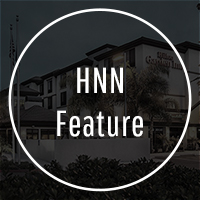What is a soft brand and is it of real value?
This article was originally published at Hotel News Now.
Here’s a look at the differences, impact and growth of soft brands in the hotel industry.
A soft-branded hotel has a franchise affiliation that primarily relies on its own identity rather than that of the franchise or “brand,” but benefits from the connection to the global distribution system (GDS) and central reservation system (CRS) among other resources for support. When I worked for Best Western International in the 1980s, we provided that type of support for over 2,000 hotels in North America.
While many of them used our signage, they primarily identified as an independent with a unique name.
In the 1990s, one of the hotels we managed was called the San Carlos Hotel in Phoenix. It was affiliated with Historic Hotels of America. One could call that affiliation a form of soft branding as well and naturally, there are other examples like Preferred Hotels, Small Luxury Hotels of the World and Leading Hotels of the World that come to mind. But the real soft brand kick-off was 10 years ago, when Choice Hotels International founded the Ascend Collection.
Today, soft-branded hotels are part of the global reservation, distribution and rewards systems that travelers want and need. The rise of Airbnb, coupled with a shortage of sites where the big brands could put their flags gave rise to the current soft-brand boom. Marriott International has the Autograph Collection, Luxury Collection and Tribute Portfolio. Hilton has Canopy by Hilton, Curio Collection by Hilton and Tapestry Collection by Hilton. Hyatt has Unbound Collection, Best Western has BW Signature Collection, BW Premier Collection and SureStay Hotels and Wyndham has Trademark, just to name a few.
Those less noted soft brands include Magnuson, IBC (we are launching with them this month in Tucson, Arizona) and LE/Luxe. The Red Collection from Red Roof Inn and InterContinental Alliance Resorts from InterContinental Hotels Group round out the group to the best of my knowledge.
Soft brands also have advantages to the owner—less onerous property improvement plans (PIPs) and “brand” requirements, more creative independence from a design perspective and one would think lower fees. Think again. The fees charged by the soft brands can be very similar to the total “hard” brand fees. On the lower side is Best Western at 5% (going public would likely cause that number to rocket upward) and others can be over 10%.
What other benefits do soft brands offer? Lower online-travel-agency fees, negotiated well below what one would pay as an independent and far less reliance on those OTAs. Shifting share from a commission rate of 20% to under 15% is important. Better yet, when Airbnb goes OTA or Google, Facebook, Amazon or another behemoth embraces blockchain technology with an OTA model, Expedia and Booking.com will really need to hustle to keep growing.
Another benefit, often not thought about, is that soft brands do not limit your average rate. Brands put ceilings on rates as they prefer franchisees to “stay in their swim lanes” so to speak. As there are no perceived or real swim lanes with soft brands, rate ceilings only exist to the extent that the market is there.
Soft brands have seen impressive growth and financial performance over the past decade. Some reasons include the desire of guests to have an authentic experience, one that perhaps is not perceived to be available at a typical branded hotel. In addition, unique food-and-beverage concepts are appreciated by today’s travelers, a change of pace from traditional branded hotel F&B offerings, with the local culture chosen by the owner, not a brand.
Technology is another area that has upside versus the brands. Branded hotels only add technology at the speed of the organization. We take our marching orders from the brand to find out when our hotel will receive the technology upgrade (mobile key is an example). Soft brands move at the speed of the owner or developer, not the brand. Communal areas are another feature of more independent hotels—no brand executives saying, “you can’t do that!” And guests still get their brand points, so everybody is happy—the owner, the guest and the brand that collects the high fees!
The most interesting question for me is what will happen when the music stops? Can the brands support their core products plus a handful of soft brands? Only time will tell. See you at The Lodging Conference!





